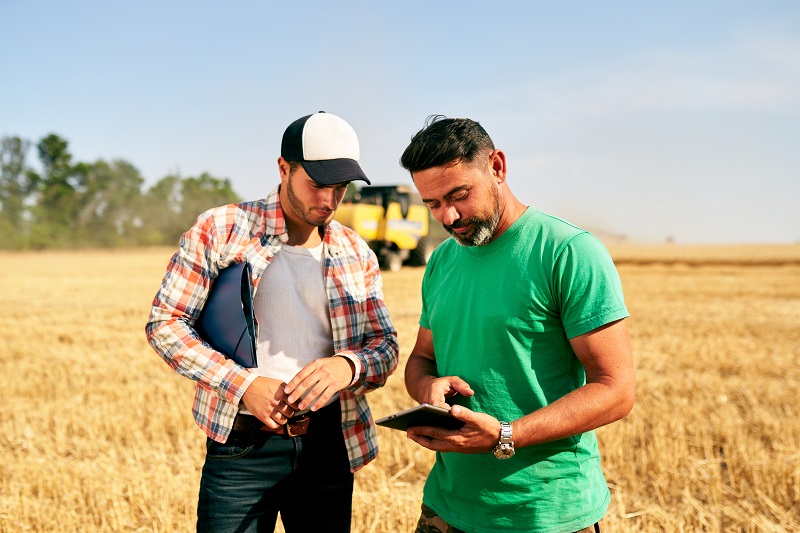
In real estate, it’s all about the land. Its history, its current state of existence and its potential moving forward. The trick for real estate professionals is properly conveying all of this to prospective buyers in a manner that is both persuasive and easy to understand. In recent years, they’ve begun to look at how a GIS land plotting app can be used to enhance both the educational and marketing aspects of buying and selling properties.
With the right software, you’re able to visualize a parcel of land in all states of its evolution: past, present and future. Here’s how:
The Past: Deed Plotting
A deed is a legal document transferring ownership rights from one party to the next. These documents define a property’s boundaries, but often, they’re pretty old, sometimes dating back to the 19th or 18th century, so they aren’t easily decipherable. Having the ability to plot out the boundaries described in a deed is incredibly helpful since most of us aren’t land surveyors familiar with archaic land measurement units like rods and chains. With a land plotting app, we can now translate deeds into useful visual aids.
To plot a deed, you analyze a deed’s metes and bounds, which describe the land’s limits based on natural landmarks and human-made structures. To visually map deed calls, simply enter the distance (in whichever unit of measurement you need to use) along with the direction of the line. While some parcels will be an easy rectangle, some will appear more like a many-sided polygon, but with a land plotting app, you can take on any shape.
When humans draw boundaries, the lines tend to be straight, but when nature is responsible for a boundary line, such as a river or body of water, they tend to be curvy. With the help of software, though, you’re able to easily enter the chord and radius for any curve.
Many deed plotting applications allow you to create the shape of a parcel, but only with a GIS software can you put this information in context with other parcel boundaries and mapping data. If a deed has previously been plotted, and you’re lucky enough to have a PDF, GIS software also allows you to transpose it on top of your map of the property.
The Future: Site Plans and Future Development
When buyers are looking for land, especially if it’s vacant, they want to know what they can do with it. There are a lot of factors that must be conveyed to fully illustrate the potential uses for a property. These may include the zoning requirements, the composition of the soil, existing water features and floodplains, existing infrastructure such as roads and utilities, and the accessibility of the land. All of this information can fill a whole binder with papers, or you can consolidate on a single, interactive map.
GIS land plotting apps not only allows you to layer topography, soil surveys and wetland and floodplain data on top of one another on a single map, but you can also include images, PDFs and database points.
Key to sharing land projects with potential investors is the ability to show them your plans. If you already have a site plan, for instance, a GIS tool allows you to georeference this on top of your aerial map. With the ability to control opacity, you can see through all the layers and get a better understanding of the project in context. On a single map, you can even add multiple georeference images and incorporate other GIS layers and features.
The Present: Parcel Data
Of course, most people will be most interested in the state of the land right now. How big is the land? Who owns the land currently? Are there any structures on it already, and if so, what do they look like? Whether you’re a property developer, real estate professional or anyone else who has a vested interest in real property, having all the information about a parcel of land in once place makes the buying and selling process go much smoother.
Explore and build parcel maps online with a GIS land plotting app. View specific parcel data nationwide, including property boundaries, in-depth ownership information, APN numbers, the most recent tax information, size, legal descriptions and more.To add more context and spatially show key land features, embed photos or videos, as well, and add your own labels and icons to help viewers make sense of what they’re looking at.
The Past, Present & Future in One place
The biggest benefit of GIS apps in real estate is the ability to share a property in all states of its existence: the original deed, the site plans for a future development and everything else pertaining to a parcel of land. In
MapRight, we consolidate all geographic and spatial information in one central location. Our interactive maps feature nine different GIS base layers, nearly two dozen MapRight layers and countless styling and customization options, so no matter what data you have to work with, you’ll be able to make a beautiful map.

Easily plot deeds in MapRight, and see the boundaries in context of the most up-to-date parcel information available. Our georeference tool makes it possible for you to overlay land surveys, deed plots or building plans with soil data, topography, water features or your own custom geographic database. Other MapRight features, including the ability to upload 3D panoramic images to your maps, share and embed maps on the web and a mobile app that tracks GPS location, make our platform the GIS application for novices and mapping experts alike.
We pride ourselves on developing a land plotting app that everyone can actually use. For many decades, unless you were a trained GIS professional, such software was costly and time consuming. MapRight gives everyone a tool that utilizes the richest GIS data available and makes it accessible for everyone. If you’re ready to start a 7-day free trial,
sign up today!